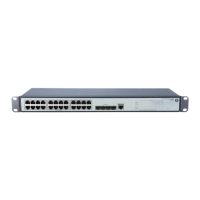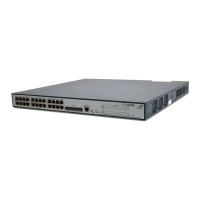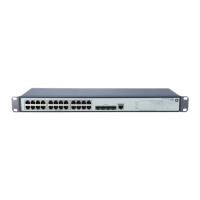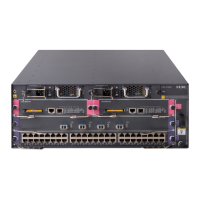8.
The RADIUS server returns a stop-accounting response (Accounting-Response) and stops
accounting for the user.
9. The user stops access to network resources.
RADIUS packet format
RADIUS uses UDP to transmit messages. It ensures the smooth message exchange between the RADIUS
server and the client through a series of mechanisms, including the timer management mechanism,
retransmission mechanism, and slave server mechanism.
Figure 330 RADIUS packet format
Descriptions of the fields are as follows:
1. The Code field (1-byte long) indicates the type of the RADIUS packet.
Table 127 Main values of the Code field
Code Packet type Description
1 Access-Request
From the client to the server. A packet of this type carries user
information for the server to authenticate the user. It must contain the
User-Name attribute and can optionally contain the attributes of
NAS-IP-Address, User-Password, and NAS-Port.
2 Access-Accept
From the server to the client. If all the attribute values carried in the
Access-Request are acceptable, that is, the authentication succeeds,
the server sends an Access-Accept response.
3 Access-Reject
From the server to the client. If any attribute value carried in the
Access-Request is unacceptable, the server rejects the user and sends
an Access-Reject response.
4 Accounting-Request
From the client to the server. A packet of this type carries user
information for the server to start/stop accounting for the user. It
contains the Acct-Status-Type attribute, which indicates whether the
server is requested to start the accounting or to end the accounting.
5 Accounting-Response
From the server to the client. The server sends to the client a packet of
this type to notify that it has received the Accounting-Request and has
correctly started recording the accounting information.
2. The Identifier field (1 byte long) is used to match request packets and response packets and to
detect duplicate request packets. Request and response packets of the same type have the same
identifier.

